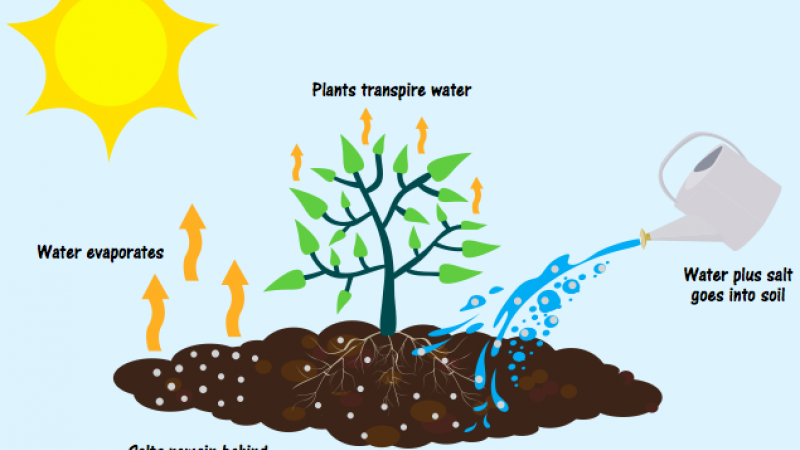New business potential for salt-affected agricultural lands
Published Date
May 10, 2015

Salt accumulation methods in the root zone of the irrigated land (Credit: WLE).
Salinity related problems are of major concern in dryland agroecosystems. The global annual cost of salt-induced land degradation in irrigated areas, in the form of crop production losses, is estimated to be around US$ 27.3 billion. By not taking any steps towards land improvement, there is an estimated 15 to 69% loss in revenues, depending on the type of crop grown, the intensity of land degradation, and irrigation water quality.
To combat these challenges, ICARDA has been carrying out a project on harnessing marginal-quality water for its management and sustainable use in the Nile River Basin and beyond. Part of the CGIAR Research Program on Water, Land and Ecosystems (WLE), outputs have contributed to a new report on ‘Potential Business Opportunities from Saline Water and Salt-affect Land Resources’, which offers a remarkable solution to the problems of saline water and soils.
This report, which appears in WLE’s Resource Recovery and Reuse (RRR) series, suggests that if saline water is recycled and reused until it becomes inoperable for any economic activity, and if salt-affected irrigated areas are returned to higher levels of production, a significant contribution to food, feed and renewable energy production can be achieved. All of this can be done without expanding the production area and thus obviating the associated challenges that this brings.
Four case studies on saline water recycling and reuse have been examined in the report, providing specific examples from developed and developing countries. It also presents four cases of reversing and restoring salt-affected irrigated land. These examples strongly support the point that strategic investments in salt-affected irrigated zones can make a significant contribution to poverty reduction, generate additional economic benefits and ensure equitable social development for smallholders and marginalized groups.
Key findings of the report include:
• Sequential Biological Concentration (SBC) of saline drainage streams can create a number of financial opportunities, while concentrating the waste stream into a manageable volume – SBC involves the serial irrigation of crops based on their salt tolerance during a first phase, moving saline water through a network of pipes allowing for the condensation of distilled water in the second, and taking the concentrated brine to phase three where energy entrapped in the hyposaline solution can be utilized
• Saline drainage water collector networks can be used for energy production
• Solar energy for the desalination of seawater can be used to produce freshwater for greenhouse irrigation and electricity for heating and cooling greenhouses
• Drainage water use in the Nile Delta is optimized by managing the pumping and blending of drainage water, with mixed results
• Productivity of magnesium-affected soils can be enhanced with phosphogypsum treatment
• Phytoremediation (the process of stabilization or reduction in soil contamination through the direct use of green plants and their associated microorganisms) can be applied on highly saline abandoned lands
• Salt-tolerant tree plantations can be established on salt-affected degraded lands for phytoremediation purposes to reverse salt-induced land degradation and provide a source of energy for rural households
• Sodic soil reclamation and improved farm income from reclaimed lands can lead to poverty reduction in the resource-poor sodic farm households.
In light of these new findings, saline water and salt-affected lands can no longer be considered as redundant and consequently neglected, especially in areas that are heavily dependent on irrigated agriculture.
There are opportunities of recovery and reuse. These also promise additional gains in the form of regenerating degraded agricultural ecosystems, mitigating climate change impacts through enhanced soil carbon sequestration, and ensuring food security without significant lateral expansion of agricultural areas.
These findings can be used extensively to guide ICARDA’s work in dryland agroecosystems where rising salinity is threatening crop production.
